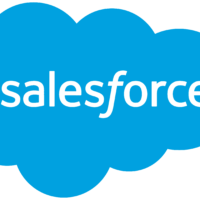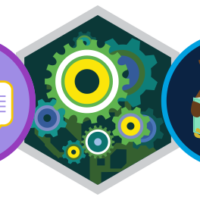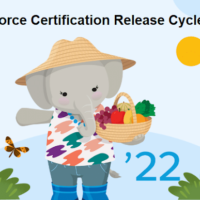Q1. What is Salesforce Service Cloud and what does it do?
Answer: Salesforce Service Cloud is a customer service platform that helps companies manage customer interactions and support inquiries. It provides a centralized place for companies to manage customer interactions, track customer service requests, and resolve customer issues.
Answer: Sure! For example, I used Salesforce Service Cloud to resolve a customer issue regarding a product return. I used the platform to access the customer’s account information, track the status of the return request, and communicate with the customer to provide regular updates. I was able to resolve the issue quickly and efficiently using Salesforce Service
Some of the key features of Service Console are”
- Split View – You can see a list of cases alongside your workspace to quickly work through incoming customer issues
- Related record and related list – You can see information related to a customer.
- Highlights panel – You can see key information about the case.
- Case Feed – You can see case history at a glance.
- Related – You can see records related to the case.
- Utility Bar – You can make productivity tools easily available to Agents.
Q3. Can you explain how you use Salesforce Service Cloud to manage customer data?
Answer: In Salesforce Service Cloud, customer data is stored in a centralized database called the “Service Cloud Console”. I use this database to access customer information, track customer interactions, and update customer profiles. I also use the platform’s reporting and analytics tools to gain insights into customer behavior and preferences, and to improve the customer service experience.
Q4. What is Case Object used for in Salesforce?
Answer: A case is a question, feedback, or issue reported by your customer. Cases can be assigned to queues to be taken up for resolution by Support Agents.
Q5. What are Case Assignment Rules?
Answer:
Assignment Rules are used to automatically assign incoming cases to specific agents based on a predefined criteria so that cases are assigned to Agents with the right skill to resolve the cases quickly.
- Order – Determines the order in which Case Assignment Rules will be applied.
- Criteria – Criteria to be used for Case Assignment.
- Assign To – User or Queue who should be assigned the Case is Assignment Criteria are met.
Q6. What are Case Escalation Rules?
Answer: Case Escalation Rules are used to automatically escalate cases when the case meets the criteria defined in the rule entry. You can create rule entries, which define criteria for escalating a case, and escalation actions, which define what happens when a case escalates
Q7. What is Case Auto-Response Rules?
Answer: Auto-response rules let you automatically send email responses to case submissions based on the record’s attributes. For example, you can send an automatic reply to customers to let them know someone at your company received their inquiry.
Answer: Email to Case is used to automatically create cases and auto-populate case fields when customers send messages to the email addresses you specify.
Q9. What is Salesforce Knowledge?
Answer: Salesforce Knowledge is a Knowledge Management Tool to manage your company’s knowledge base. You can create Salesforce Knowledge articles and make it available to Support Agents to help them resolve cases faster. You can also share Knowledge Articles with your customer via an Experience Cloud site to help them self service their Cases.
Q10. What is Entitlement Management?
Answer: Entitlement management is used to provide correct support to your customers based on their Service Agreements with your company. Entitlement management features include:
- Entitlements – let support agents determine whether a customer is eligible for support.
- Entitlement processes – let you design timelines that include all the steps that your support team must complete to resolve support records like cases or work orders.
- Service contracts – let you represent different kinds of customer support agreements like warranties, subscriptions, or maintenance agreements.
- Experience access to entitlements – lets Experience users view entitlements and service contracts and create support records from them.
- Reporting on entitlement management – lets you track the way entitlements are used in your Salesforce org and whether service contract terms are being met.
Q11. What is Incident Management?
Answer: Incident Management is a Service Cloud solution that helps your teams track large-scale disruptions and delegate tasks to the right experts to ensure that your business delivers on customer expectations. With Incident Management, you can:
- Proactively identify and address incidents.
- Provide agents and response teams a centralized place to track and manage the incident
- Leverage a unified console where incident, customer, and case data is easy to find.
- Meet service level agreements (SLAs).
Q12. List some of the key Incident Management Objects.
Answer: Some of the key Incident Management Objects are:
-
Incident– Create an incident record to track and identify a disruption that affects a large number of customers
-
Problem– Create a problem record where managers and experts collaborate on root cause analysis
-
Change Request– After the root cause is identified, create a change or release request record to deploy the fix and resolve the issue





